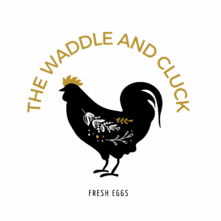Twig girdling beetles are Nature’s not-so-careful pruners. They are the cause of all the downed twigs and small branches we see on the ground this fall. It sure looks like they have been working overtime.

The female beetle lays her eggs just under the bark of a small branch, then chews around the branch so all that’s left is a small piece in the middle. The branch dies and the wind breaks it off and it falls to the ground. The fallen branch looks like someone cut it with a penknife. In fact, that’s what I thought when I saw the first ones at our place and wondered who was messing with our trees. The trees that I’ve seen infested most often are elm, pecan and persimmon, although the beetles attack others as well.

Eggs that have been deposited will hatch in about 3 weeks and the tiny larvae feed on the dead branch and overwinter in it. In the spring, larvae will complete their development and become pupae. Adult beetles emerge in the fall and start the cycle all over again. Adults belong to a group of insects called long-horned beetles because their antennae are at least as long as their bodies, which are a half to three-fourths of an inch.

To reduce damage to trees the following year, it’s best to get rid of the fallen branches. If you live in an area where burning is allowed, the easiest way to destroy them is to burn them, since larvae remain under the bark all winter.
FAQ on Twig Girdling Beetles (Oncideres cingulata)
What are Twig Girdling Beetles?
Twig girdling beetles, scientifically known as Oncideres cingulata, are longhorn beetles that damage hardwood trees by girdling small branches. They are grayish-brown in color, about 1/2 to 5/8 inch long, and have long antennae as long or longer than their bodies[1][5][9].
What trees do they attack?
These beetles target a variety of hardwood trees, including:
- Pecan
- Hickory
- Elm
- Oak
- Hackberry
- Dogwood
- Poplar
- Persimmon
- Honeylocust
- Various fruit trees[2][6][8].
How do they cause damage?
Female twig girdlers chew a smooth, circular groove around small branches (1/4 to 1/2 inch in diameter) late in the growing season. They lay eggs beyond the girdled section because larvae cannot develop in living wood with high moisture content. The girdled branches die and often fall to the ground, where larvae overwinter and feed on the dead wood[1][2][8].
What does the damage look like?
Girdled twigs appear as if cut with a small saw, with a smooth outer edge and a broken center. Affected trees may lose numerous twigs, creating an unsightly appearance and reducing canopy symmetry. In pecan trees, this can lower nut yields and cause structural deformities in young timber[2][6][8].
What is their life cycle?
Twig girdlers have a one-year life cycle:
- Late Summer to Fall: Adults emerge, mate, and females girdle twigs to lay eggs.
- Winter: Larvae overwinter inside fallen twigs.
- Spring to Summer: Larvae feed on dead wood and pupate inside the twig.
- Late Summer: Adults emerge to repeat the cycle[4][8].
Are they harmful to tree health?
While twig girdlers cause aesthetic damage and reduce tree vigor temporarily, they rarely pose a severe threat to overall tree health unless infestations are large or repeated over multiple years[2][6].
How can I manage or prevent twig girdler infestations?
- Manual Removal: Collect and destroy fallen twigs in fall or spring to eliminate larvae before they mature into adults.
- Tree Care: Maintain healthy trees through proper pruning and fertilization to reduce susceptibility.
- Chemical Control: Not recommended or practical for this pest[2][6][10].
Where are they found?
Twig girdlers are distributed across the eastern United States, from New England to Florida, and westward to Kansas and Arizona. They are also found in parts of Texas and other Gulf Coast states[2][5].
Sources
[1] Twig Girdlers – UF/IFAS Gardening Solutions – University of Florida https://gardeningsolutions.ifas.ufl.edu/care/pests-and-diseases/pests/twig-girdlers/
[2] Twig girdlers | K-State Turf and Landscape Blog https://blogs.k-state.edu/turf/twig-girdlers/
[3] How can I minimize damage to a saw-tooth oak from twig girdler … https://ask2.extension.org/kb/faq.php?id=408283
[4] [PDF] Problem: Twig Girdler – Oncideres cingulata Plants Affected https://hnr.k-state.edu/extension/horticulture-resource-center/common-pest-problems/documents/Twig%20Girdler.pdf
[5] Oncideres cingulata – Wikipedia https://en.wikipedia.org/wiki/Oncideres_cingulata
[6] Twig Girdler and Twig Pruner Beetles | Davey Tree https://www.davey.com/insect-disease-resource-center/twig-girdler-and-twig-pruner/
7 The host-plant range of twig-girdling beetles (Coleoptera https://www.researchgate.net/publication/233150975_The_host-plant_range_of_twig-girdling_beetles_Coleoptera_Cerambycidae_Lamiinae_Onciderini_of_the_Atlantic_rainforest_in_southeastern_Brazil
[8] Twig Girdler – Oklahoma State University Extension https://extension.okstate.edu/programs/digital-diagnostics/insects-and-arthropods/twig-girdler-oncideres-cingulata/
[9] Twig Girdler – Tulsa Master Gardeners https://www.tulsamastergardeners.org/blog/Entries/2021/8/twig-girdler-2.html
[10] Twig Girdler Control: Learn How To Manage Twig Girdler Damage https://www.gardeningknowhow.com/plant-problems/pests/insects/twig-girdler-control.htm
[11] Twig Girdler – Field Guide to Common Texas Insects https://texasinsects.tamu.edu/twig-girdler/








